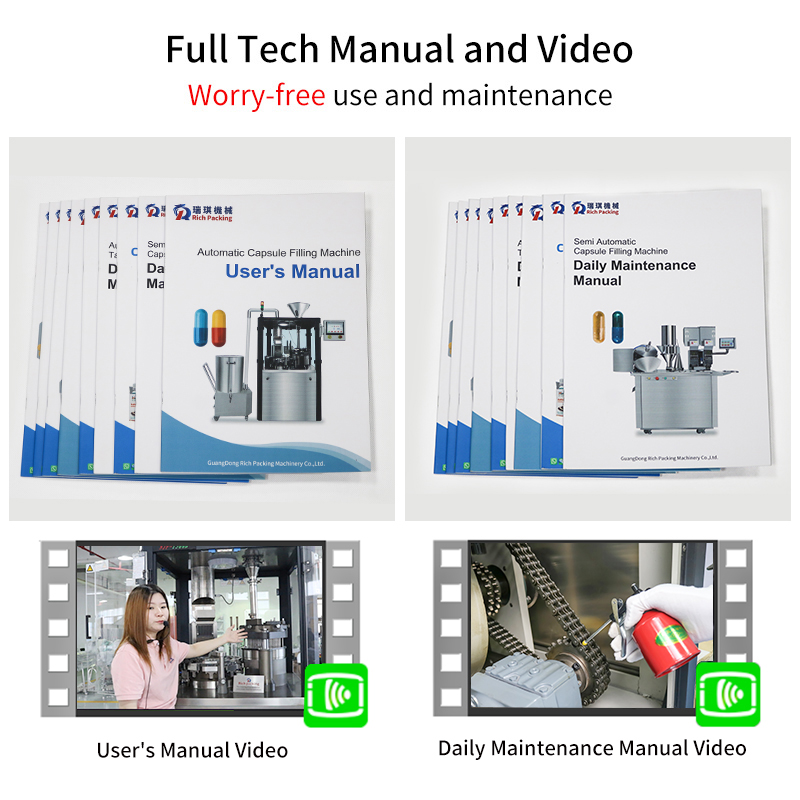Categories
New Blog
Tags
Capsule filling machines are indispensable in pharmaceutical, nutraceutical, and supplement manufacturing. These machines ensure precise dosing, efficiency, and compliance with industry standards. However, like any sophisticated equipment, they require regular maintenance to operate optimally. Neglecting maintenance can lead to costly downtime, product inconsistencies, and even safety hazards.
In this comprehensive guide, we’ll explore best practices for maintaining your capsule filling machine, ensuring longevity, accuracy, and compliance. Whether you’re a technician, production manager, or business owner, these tips will help you maximize ROI and minimize operational disruptions.
Before diving into the “how,” let’s address the “why.” Proper maintenance of your capsule filling machine:
- Extends Lifespan: Reduces wear and tear on critical components.
- Ensures Product Quality: Prevents dosing errors, contamination, or capsule defects.
- Saves Costs: Avoids expensive repairs and unplanned downtime.
- Complies with Regulations: Meets Good Manufacturing Practices (GMP) and FDA/ISO standards.
A well-maintained machine also boosts productivity and protects your brand reputation by delivering consistent, high-quality products.

Daily cleaning is the cornerstone of capsule filling machine maintenance. Residual powder, gelatin, or oils can accumulate, leading to blockages or cross-contamination.
Tools Needed:
- Soft brushes or lint-free cloths
- Food-grade lubricants
- Isopropyl alcohol (70% or higher)
- Compressed air
Steps:
1. Power Down and Disassemble: Always turn off and unplug the machine. Remove removable parts like dosing discs, tamping pins, and hoppers.
2. Dry Cleaning: Use brushes or compressed air to remove loose powder from surfaces, crevices, and moving parts.
3. Wet Cleaning: Wipe stainless steel components with a cloth dampened in isopropyl alcohol. Avoid excess moisture near electrical parts.
4. Lubricate Moving Parts: Apply a thin layer of food-grade lubricant to rails, bearings, and gears to prevent friction.
5. Reassemble and Test: Ensure all parts are dry before reassembly. Run a test cycle with empty capsules to confirm smooth operation.
Pro Tip: Create a cleaning checklist for operators to standardize the process.
Depending on usage, schedule a deep clean every 1–4 weeks. This involves disassembling complex components and addressing hidden residue.
Focus Areas:
- Dosing System: Check for clogs in powder feeders or dosing tubes.
- Sealing Jaws: Remove gelatin buildup to ensure proper capsule sealing.
- Conveyor Belts: Clean tracks to prevent misalignment of capsules.
Use manufacturer-approved solvents for stubborn residues, and inspect O-rings and gaskets for wear.
Lubrication reduces friction and prevents premature wear. However, over-lubrication can attract dust or contaminate products.
Key Lubrication Points:
- Cam tracks
- Turret bearings
- Tamping pin assemblies
Best Practices:
- Use only lubricants specified in the machine manual (e.g., NSF-certified oils).
- Apply sparingly—wipe off excess.
- Re-lubricate every 200–300 operating hours or as recommended.
Regular inspections catch minor issues before they escalate.
Common Wear-Prone Components:
- Tamping Pins: Bent or worn pins cause underfilled capsules.
- Dosing Discs: Check for scratches or corrosion.
- Belts and Chains: Look for cracks or slack.
- Filters: Replace air filters to maintain suction efficiency.
Keep a stock of critical spare parts (e.g., springs, bearings) to minimize downtime.
Even slight misalignments can affect dosing accuracy. Calibrate the machine periodically:
1. Check Weight Variation: Use a precision scale to weigh 20–30 capsules. Adjust the dosing system if deviations exceed ±5%.
2. Test Capsule Integrity: Ensure capsules are sealed properly and free of dents or splits.
3. Verify Speed Settings: Overloading the machine can cause jams. Stick to the recommended RPM.
Document calibration results to track performance trends.
Human error accounts for 40% of machine malfunctions. Ensure operators:
- Understand the machine’s user manual.
- Recognize abnormal noises or vibrations.
- Know emergency shutdown protocols.
- Follow PPE guidelines (gloves, goggles).
Conduct refresher training annually or after process changes.
Regulatory bodies require documentation of maintenance activities. Use a logbook or digital system to record:
- Cleaning dates and methods
- Lubrication schedules
- Part replacements
- Calibration results
- Repairs and downtime incidents
This data also helps identify recurring issues and plan preventive maintenance.
Even with diligent in-house care, annual servicing by certified technicians is crucial. Professionals can:
- Diagnose hidden electrical or software issues.
- Update firmware for improved functionality.
- Validate compliance with GMP/ISO standards.
- Always lock out/tag out (LOTO) the machine before servicing.
- Avoid using abrasive cleaners that damage stainless steel.
- Never bypass safety sensors or guards.
A capsule filling machine is a significant investment, and its performance directly impacts your product quality and bottom line. By implementing a structured maintenance routine—daily cleaning, lubrication, part inspections, and operator training—you’ll ensure years of reliable service. Remember, preventive maintenance isn’t an expense; it’s an insurance policy against costly breakdowns and compliance violations.
Q: How often should I replace tamping pins?
A: Inspect pins monthly. Replace them if bent, corroded, or causing inconsistent filling.
Q: Can I use water to clean the machine?
A: Use only approved solvents. Water can cause rust or electrical damage.
Q: What’s the average lifespan of a capsule filling machine?
A: With proper maintenance, 10–15 years, depending on usage.
Q: How do I reduce powder waste during cleaning?
A: Use vacuum systems or brushes designed to capture residue.
Q: Are there automated maintenance tools available?
A: Yes! Some models feature self-cleaning cycles or IoT sensors for predictive maintenance.
By following this guide, you’ll keep your capsule filling machine running like new, ensuring efficiency, compliance, and customer satisfaction.